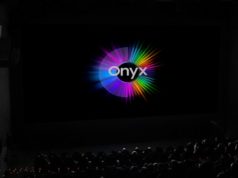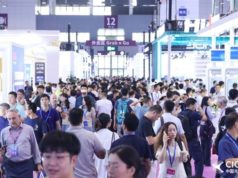We rely one mobile handsets nowadays. That’s why it’s vital to own a smartphone with a large capacity battery. But if your favorite phone doesn’t sport a large battery, it still doesn’t meant the phone won’t provide long-lasting life. Currently all top brands or those smartphone makers that want to join the party come with their own fast charge technology. So we decided to compare two pairs of devices and find out which brand / handset provides better charging / discharging performance. The first pair includes the newly launched Huawei P10 and Xiaomi Mi 5C, while the second group includes the large-screen models such as the Vivo X9 Plus and the Meizu Pro 6 Plus. When comparing the phones with each other we were keeping in mind two goals: a) how large screens affect the battery life; b) whether new phones come with improved fast charge technology.
Before we start the comparison let’s take a quick look at the key features of all 4 models.
Software comparison table
- Millet 5C: MIUI 8.1 stable version
- Huawei P10: EMUI 5.1
- Vivo X9 Plus: Funtouch OS 3.0
- Meizu Pro 6 Plus: Flyme 6.0.2 official version
In terms of dimensions and battery size, the Huawei P10 comes at dimensions of 145.3 × 69.3 × 7.0mm, while the Mi 5C comes at 144×69.7×7.0mm. Thus they have almost the same thickness. But the battery capacity differs from each other – 3200mAh and 2860mAh, respectively. In this sense Huawei could put a larger battery in the same body rather than Xiaomi.


As for the second pair of devices, the Vivo X9 Plus comes at 162x79x7.5mm, while its rival comes at 155x77x7.3mm. This is the case when a thickness is directly connected to the battery capacity. The Vivo X9 Plus sports a 4000mAh battery, and that’s why it’s a bit bulkier. The Pro 6 Plus is packed with a 3400mAh battery.


Vivo X9 Plus (4000mAh) > Meizu Pro 6 Plus (3400mAh) > Huawei P10 (3200mAh) > Xiaomi Mi 5C (2860mAh)
But the aforementioned comparison is based only on the battery size. To provide fairer results let’s calculate Battery and body ratio, which is equal to battery capacity / dimensions (the greater the value, the higher the battery capacity and the proportion between the housing).
- Huawei P10: 3200mAh / 14.5 x 6.9 x 0.7 cm = 45.69
- Millet 5C: 2860mAh / 14.4×7.0×0.7cm = 40.53
- Vivo X9 Plus: 4000mAh / 16.2×7.9×0.75 cm = 41.71
- Meizu Pro 6 Plus: 3400mAh / 15.5×7.7×0.73cm = 39.02
This table showcases the Huawei P10, which is equipped with the third battery in terms of capacity, is on the first position.

Huawei P10 (45.69) > Vivo X9 Plus (41.71)> Xiaomi Mi 5C (40.53)> Meizu Pro 6 Plus (39.03)
Well, let’s see how the process technology a chip runs on can affect the battery life. As you know, one of the biggest shortcomings of Xiaomi’s Surge S1 is the 28nm process technology. So theortically it will have some problems with the 16nm Kirin 960. The same can be said for the Snapdragon 635 on 28nm process technology, which shouldn’t make a real competition to the Exynos 8890 on 14nm.
Group A
- Huawei P10: Kirin 960 (16nm)
- Millet 5C: pine cones S1 (28nm)
Group B
- Vivo X9 Plus: Qualcomm Xiao Long 653 (28nm)
- Meizu Pro 6 Plus: Exynos 8890 (14nm)
Before we start comparing the power consumption based on process technologies they use, let’s see what benchmark results these processors provide.

Taking into account only this factor the phones can be put in the following sequence:
Exynos 8890 (Samsung 14nm) ? Kirin 960 (TSMC 16nm)> Qualcomm Snapdragon 653 = Surge S1 (28nm)
Currently many manufacturers try to come in with a high-pressure fast charge technology, which raises voltage for more efficient charging process. In this sense Qualcomm’s chips are the most popular processors. But high-pressure charging makes the phone to get warmer, which can impair the hardware. On the contrary, low-voltage charging doesn’t heat the phone much. But as you understand, it will take longer to charge the phone.

All these chemistry and physics rules affect the chargers production. The lower voltage is the larger the charger should be. The same can be said for the cables – look at the special ends of cables made for Huawei P10 and Vivo X9 Plus.


As for testing, all 4 models were remaining 50% of power.
The Huawei P10 supports Super Charge at 5V2A, 4.5V5A, 5V / 4.5A. The system adjusts body temperature and adjust the power output automatically. Theoretically, it should be at 22.5W, but the test shows 14.1W.


The Xiaomi Mi 5C supports 5V2.5A, 9V2A, 12V1.5A. Theoretically it should be at 18W, but the test shows 18.5W.


The Vivo X9 Plus supports only 5V4.5A. Theoretically, it should be at 22.5W, but it shows 22.1W. Note its charger is the biggest one in comparison to the others.


The Meizu Pro 6 Plus supports 22.5V3A, 8V3A, 12V2A. Theoretically, it should be at 24W, but it shows 21.7W.


Thus, theoretically the ranking is as follow:
Meizu Pro 6 Plus (24W; high pressure)> Huawei P10, Vivo X9 Plus (22.5W; low pressure)> Xiaomi Mi 5C (18W; high pressure)
But the actual ranking is as follow:
Vivo X9 Plus (?22.1W)> Meizu Pro 6 Plus (?21.7W)> Xiaomi Mi 5C (?18.5W)> Huawei P10 (?14.3W)
The most important test was taken to find out how long it takes to charge from 0% to 100%.
We have taken screenshots for starting and final status.

 From left to right (Huawei P10, Xiaomi Mi 5C, Meizu Pro 6 Plus, Vivo X9 Plus)
From left to right (Huawei P10, Xiaomi Mi 5C, Meizu Pro 6 Plus, Vivo X9 Plus)
As you see, the Xiaomi Mi 5C charges fully in 58 minutes, which is the fastest charging time.

Moreover, we even wrote down the test results after 30 minutes.


The Huawei P10 reaches 50% of power (1600mAh). The Xiaomi Mi 5C reaches 63% (1801mAh). The Vivo X9 Plus reaches 56% (2204mAh). And finally, the Meizu Pro 6 Plus reaches 56% as well (1904mAh).
Vivo X9 Plus (2204mAh)> Meizu Pro 6 Plus (1904mAh)> Xiaomi Mi 5C (1830mAh)> Huawei P10 (1600mAh)
As there are low-pressure and high-pressure charging technologies, let’s see how they affect the temperature.
The test was held at a room temperature of 27 degrees. The temperature is measured after 15 minutes of charging.
The Huawei P10 reaches maximum temperature of 29.1 degrees (low pressure fast charge).

The Xiaomi Mi 5C reaches maximum temperature of 33.1? (high pressure fast charge).

The Vivo X9 Plus reaches maximum temperature of 27.7 ? (low pressure fast charge).

The Meizu Pro 6 Plus reaches maximum temperature of 32.4 ? (high pressure fast charge).

To test the phones in terms of discharging we provided the following conditions for all 4 models: no SIM card, WiFi on, Bluetooth off, running a few apps like QQ, WeChat, Taobao, and remaining power at 100%.

After 9 hours the Huawei P10 is still remaining 95% of power, the Xiaomi Mi 5C is remaining 94%, the Meizu Pro 6 Plus is remaining 88% and the Vivo X9 Plus is remaining 98%.
But this test was held to find out the discharging on standby mode. As for a heavy use, we tested it during 2.5 hours. All 4 models remain 100% of power, WiFi is on, no SIM card is enabled, Bluetooth is on, and they are tested at the same brightness.
1 hour of online video playback

30 minutes of heavy game playing

30 minutes of chatting

The test also includes: 30 minutes of web browsing; 30 minutes of video recording; 30 minutes of music playback.
The discharging test results are below.


After 2.5 hours of heavy use, the Huawei P10 is still remaining 42% of power (1344mAh). Sounds good, but the Xiaomi Mi 5C consumes only 11% of power after 30 minutes of heavy game play. However, it shows 38% of power after the whole test (1086mAh), which is not the best result. The Meizu Pro 6 Plus shows the most stable power consumption. Regardless what you are doing on your handset it drainages by the same volume. As for the test result, this handset is still remaining 47% (1598 mAh). But do not hurry to make assumptions, because the same Meizu Pro 6 Plus consumes 12% in standby mode (9 hours). Finally, as for the Vivo X9 Plus, it drainages to 2240mAh after 2.5 hours of heavy use sporting a 4000mAh battery.







